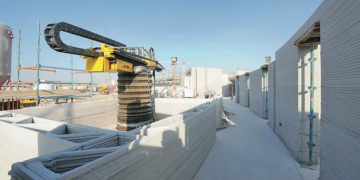We all have repeatedly heard the expression “commodity concrete”. This term can cause a number of questions: why commodity? And what are others? What is the difference? Let’s try to figure it out.
One of the main indicators characterizing concrete is the astringent in it. Strictly speaking, a number of different agents can be a binder, but the most traditional and well -known to everyone – this, of course, is cement. Depending on the amount of cement in the solution, the properties of the resulting mixture depend. The larger it, the faster the mixture freezes and the stronger it turns out.
Three types of concrete are distinguished by the content of the astringent.
Skinny concrete. There is very little cement in this material. Therefore, this solution does not make it possible to effectively form monolithic elements. Why is it needed? In fact, its use is quite wide. With its help, the preparation of the bases under the foundation is made, the surfaces of the bottom of the pits are aligned and. P. In a word, it is a “rough” material that is used to improve soil characteristics. Applying this material, you can cope with such difficulties as a small bearing capacity of the soil, excessive soil, swelling of the soil when smearing.
Fat concrete is a material with increased msent. This solution is suitable for the most important work, where increased strength is needed. It is used to form various supporting structures, beams and other responsible engineering elements of the structure.
Finally, commodity concrete is a material made with strict compliance with the recipe. Modern electronic equipment of concrete plants allows you to measure all the ingredients to the gram, set the size of the filler fraction, supply the water of the perfect temperature, etc. P. Commodity concrete can be made of different brands and with different additives. When contacting a concrete plant, it is necessary to specify the main parameters of the material that is ordered.
These parameters are compression strength (brand and class), resistance to cold, resistance to moisture penetration, mixture mobility level. In addition, the customer may indicate additional parameters, the observance of which is achieved by the introduction of modifying chemical agents to the material. For example, additional mobility can be achieved without reducing strength, etc. P.










